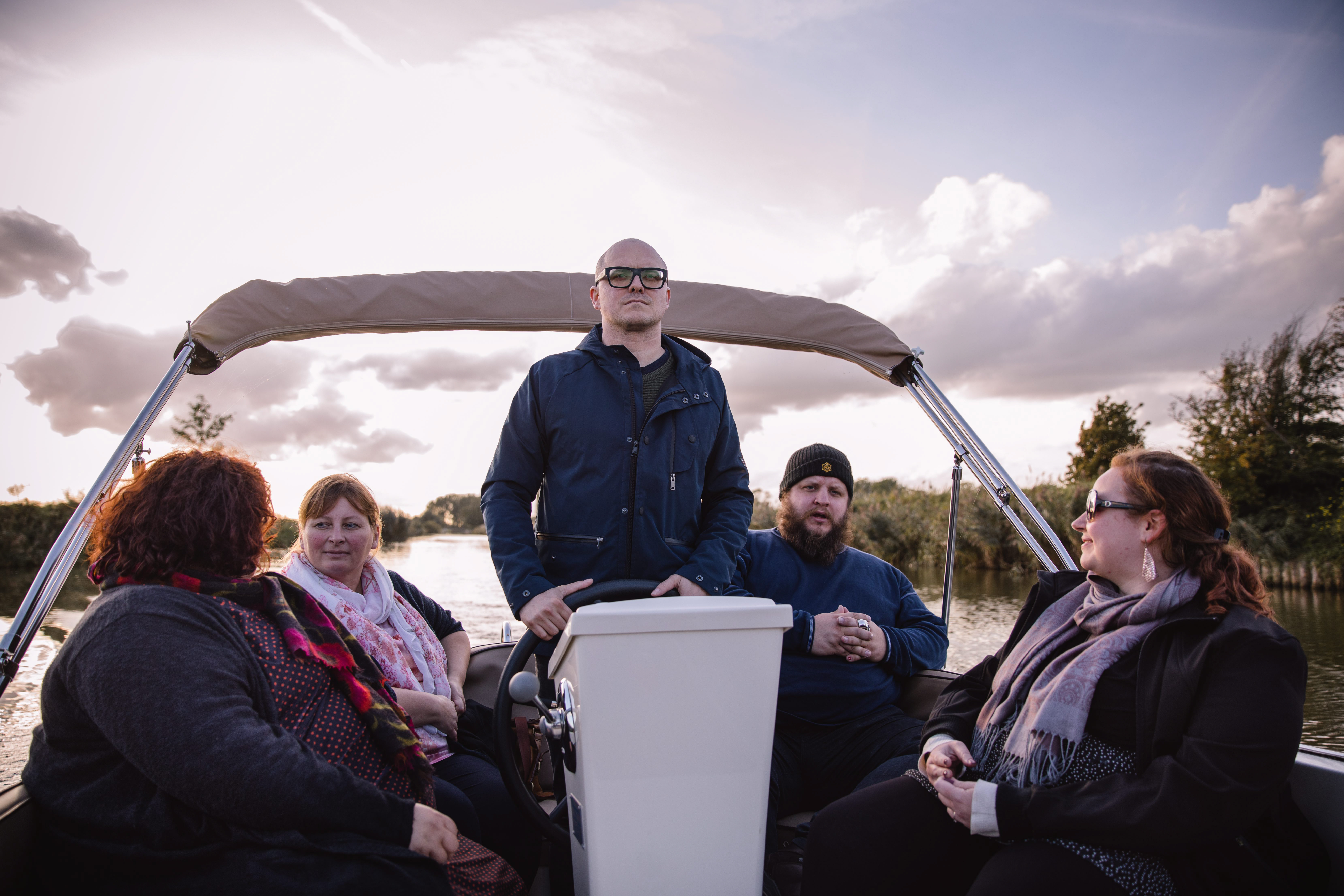Ideally, public service media should offer a multiplatform space that is universal, credible, impartial and financed by the public, for the public. The audience should be at the core of its mandate and in the digital media age, they must come first.
Yet it is often the contemporary needs of the public that slip out of mind, as public media struggle to keep pace with the latest digital developments, SVOD services and fight the endless battle to compete for relevance in a plural media space.
But many broadcasters around the world have risen to this challenge and have embarked on innovative ways to engage, and even directly involve their audiences in the production of content and the internal workings of the organisation.
Here we explore some initiatives that public media outlets have undertaken in recent years to put the public back into public service media.
PeoPo – PTS, Taiwan
A prime example is PeoPo in Taiwan. The service, launched in 2007 by the public broadcaster Public Television Service (PTS), was developed in response to growing public distrust towards the country’s commercially driven news landscape.
The service allows citizens to produce their own multimedia news reports and interact with other users. It has proved particularly useful during crises, natural disasters and emergencies such as the Tainan Earthquake, when citizen reporters provided vital information to fellow citizens with live observations and first-hand updates, many of which featured on traditional PTS news services.
“Public access is one of PTS’ core services,” Mr. Chili Yu, PTS’ Supervisor told PMA. “Strengthening citizen participation can help emphasise the value of public television.”
The platform’s reach is a real success. With over 10,000 citizen contributors, the service doesn’t solely cater for young audiences but engages a large breadth of the population – the youngest reporter is 11 and the oldest is 86 years old, with more than 20% of its users in their 20s. Mr. Yu also emphasised PeoPo’s role in making the broadcaster more accessible and inclusive of grassroot and rural communities, helping PTS to dispel accusations that it catered for more “cosmopolitan tastes”.
Such a reach not only allows for the production of diverse content, but also gives PTS an opportunity to contribute to media literacy across the country. As part of PeoPo’s service it has organised over 1000 workshops island-wide, offering journalistic skills to its volunteers and contributors.
“Since launching in 2007, we systematically encouraged citizen reporting by providing media literacy, storytelling and online tutorials. We also host physical workshops and training courses,” added Mr. Yu. “Because of this, the quality of citizens reporting is increasing steadily and traditional media now pay more attention to citizens’ reporting and issues from local people.”
To become a PeoPo reporter, users need to undergo ID verification and agree to a code of ethics to “report fairly and honestly” on content that is of public interest, and to respect fellow citizen reporters.
PeoPo users are also supported by a Citizen Journalism Self-regulatory Committee. Established in 2016, the committee is comprised of NGOs, professional journalists, senior citizen journalists and academics, whom review the platform’s operation and specific cases such as unverified news or hate posts flagged by PeoPo users. Quality reporters are given the opportunity to have their uploads shown via PTS’s broadcast news service, with up to 10 stories shown per week.
C-Site – Thai PBS, Thailand
Thailand’s public broadcaster, Thai PBS, recently launched C-Site, a smartphone app that invites citizens to report on local issues. Users can report what is happening in real time via the app, while its notification system informs users about the latest local developments.
The broadcaster sought to create a specific space for user-generated content (UGC) that could be widely available and connect users to one another.
Users can navigate the application using a map and select specific news categories and the locations they are most interested in. They can also follow each other and collect news they are interested in based on location, numbers of likes and so on.
Some user-generated reports also feature on Thai PBS News every Monday either on TV or online.
ABC Open in Australia
ABC Open, an online space for user-generated content, was launched with the tagline ‘Real stories made by real people from all around Australia’.
The service, by Australia’s largest public broadcaster, offers interested users a range of tutorials to help them create their own stories, such as sharing photos on social media and tips on smartphone photography. In addition, as a form of inspiration, the platform regularly sets new projects for contributors.
Previously, users also had the opportunity to find an ABC producer in their local area by entering their postcode to receive advice on how to create and share their stories. The service has now lapsed but contributors still have the chance to have their report showcased via ABC websites, radio and/or television.
Encouraging meaningful participation
Yet citizen journalism is not the only way of directly engaging and involving the public in PSM. Audiences can be involved in many other ways and provide public media with one of their most invaluable assets: feedback.
The Swiss public broadcaster, SRF, launched Hallo SRF as a way of strengthening dialogue with their audience and receiving feedback because according to them, “good programmes can only be made by those who know their audience, who answer to their questions and their criticism as well as their concerns.”
This exchange takes place in various ways: via radio, as an event or on television where listeners, viewers and online users get the chance to have their say. For example, in October 2018, members of the audience had the opportunity to chat with more than 20 managers of TV, radio, and online services to give feedback, ask questions and suggest new programme ideas.
In February 2018, audiences had a similar opportunity with SRF Meteo, asking programme experts and producers questions about the weather. In addition, from Monday to Friday, the public broadcaster features a “public question of the day”, which SRF staff then attempt to answer.
The service is open to any member of the public at all times, with users able to anonymously contact the public broadcaster’s customer services if they want to. Finally, the broadcaster also offers guided tours of the organisation to let people experience its operations first hand.
Not only public service media
Yet PSM aren’t the only ones experimenting with more participatory media – many media organisations, especially in countries where PSM is limited or not present, fill the gap by providing quality public interest media for citizens and, as in the case of Mi Voz in Chile, with the citizens themselves.
Mi Voz (My Voice), invites people in all areas of Chile to write about issues that affect their communities. Created in 2005, this voluntary based publication also has a staff of journalists and editors who take care of content production and coordinate the material sent by people across different regions. The organisation also offers training workshops on what internet, blogs and social networks have to offer as well a specific citizen journalism training.
The service was built in 2005, as an alternative to the Chile’s concentrated media landscape – one of the most concentrated in Latin America – and for the need to cover topics that were of interests to local communities. Mi Voz now has 15 media outlets and distributes across 14 regions.
“It seemed like a tremendous opportunity to invite citizens to go into the field and be part of the construction of the reality of the places where they live,” said Jorge Domínguez, the network’s general manager.
Ultimately, audience involvement can take place in a variety of ways. Surveys, focus groups and inclusion initiatives such as the one in Switzerland, are all great examples. But as audiences fragment as they are exposed to a plurality of content in the digital age, and increasingly become the creators of content themselves, public media need to innovate to maintain their trust and their value. Becoming more holistic platforms where the audience can engage directly with PSM or contribute to content is a way to help ensure better representation and in turn, accountability.
Header image: A young man using a professional camcorder outdoor. Credit: porpeller/iStock. Credit: Porpeller/iStock
Related Posts
3rd December 2018
Best of PSM | NPR engaging younger audiences
Public radio in the US engages students…
23rd November 2018
Best of PSM | VRT’s Taboe – ’Laughing at things you should not be laughing at’
How a mix of human interest stories and…
8th November 2018
Best of PSM | Climate Change – Politics and Actions
Climate change has been a thorny issue…



